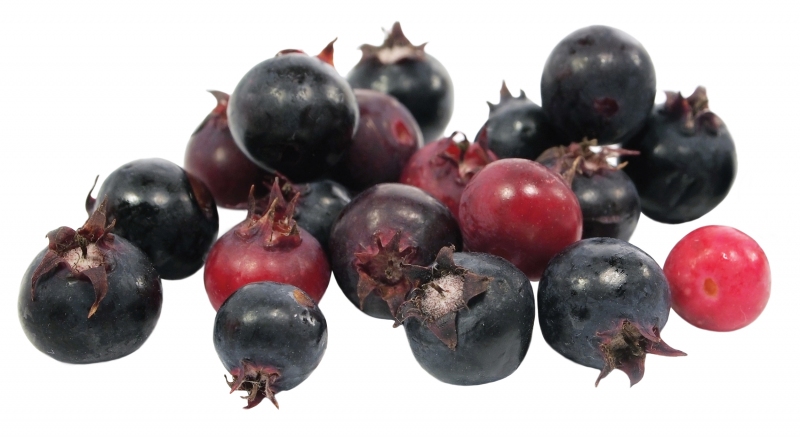Saskatoons were a staple in many prairie First Nations diets, well before European settlers also fell in love with the pea-sized berries that the Cree people called misskwatmin (mis-sask-quah-too-min). Saskatoon berries were used in making pemmican; they were added to buffalo meat that had been dried, pounded and mixed with fat to offer a bit of vitamin C to winter diets.
With a flavour likened to honey or almonds, the deep purple berries are members of the rose family. Saskatoon berry bushes like southern exposure and thrive in well-drained, slightly acidic soil.
Carpe Diem
Michael Avenati, owner of Mo-Na Foods, a wild and foraged food supplier to Edmonton restaurants, distributed about 1,000 kilograms of saskatoons to local restaurants last year. A ‘toon lover, Avenati likes picking the berries in the woody corners of friends’ properties.
“What you do is look for the budding of the bush in May, then re-visit the area at the end of August to find out what succulent fruit awaits,” says Avenati. “There is a short window to pick, so always be ready to pick when you see them.”
Priscilla Lalonde, a Cree resident of Faust, Alta., agrees: Carpe diem is the motto of saskatoon picking.
“In our area, we pick saskatoons mostly in July and August. They grow wild, so if you see them, you stop to pick them.”
Integral Ingredient
Though Shane Chartrand, executive chef at Sage at the River Cree Resort and Casino, grew up around Red Deer and Penhold, his family used to drive south to Okotoks during saskatoon season to fill buckets with berries.
Now, as a champion of progressive aboriginal cuisine, Chartrand – a member of the Enoch Cree Nation – champions saskatoons on the Sage menu.
“I try to cook as indigenous as possible,” he says. ” [Saskatoon berries] have to be on my menu. It’s important.” Chartrand uses the berries in Sage’s hunter’s platter, where the berry is featured in different forms – sometimes dehydrated, sometimes as a compote, depending on the season.
